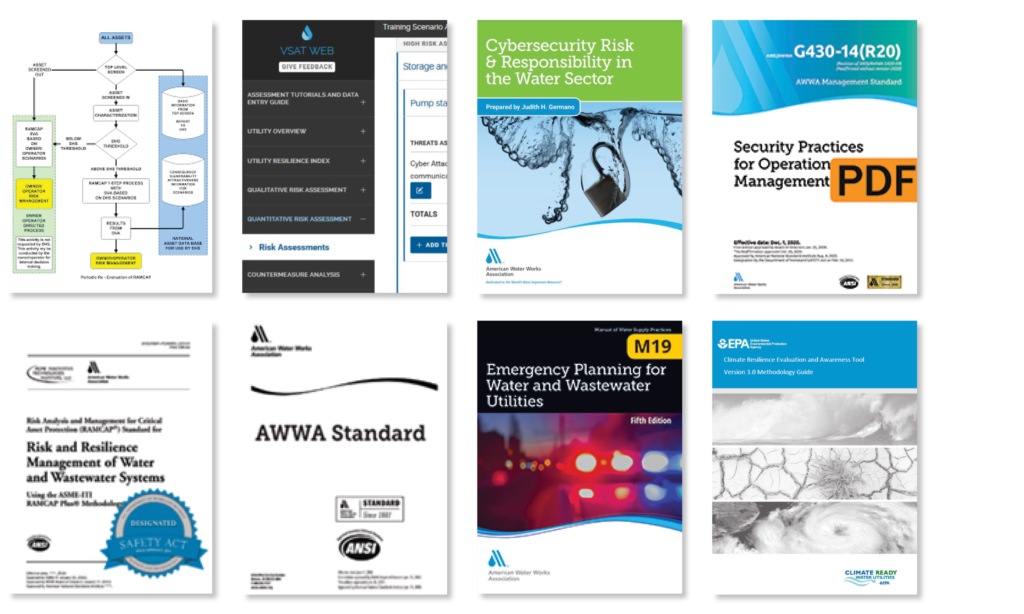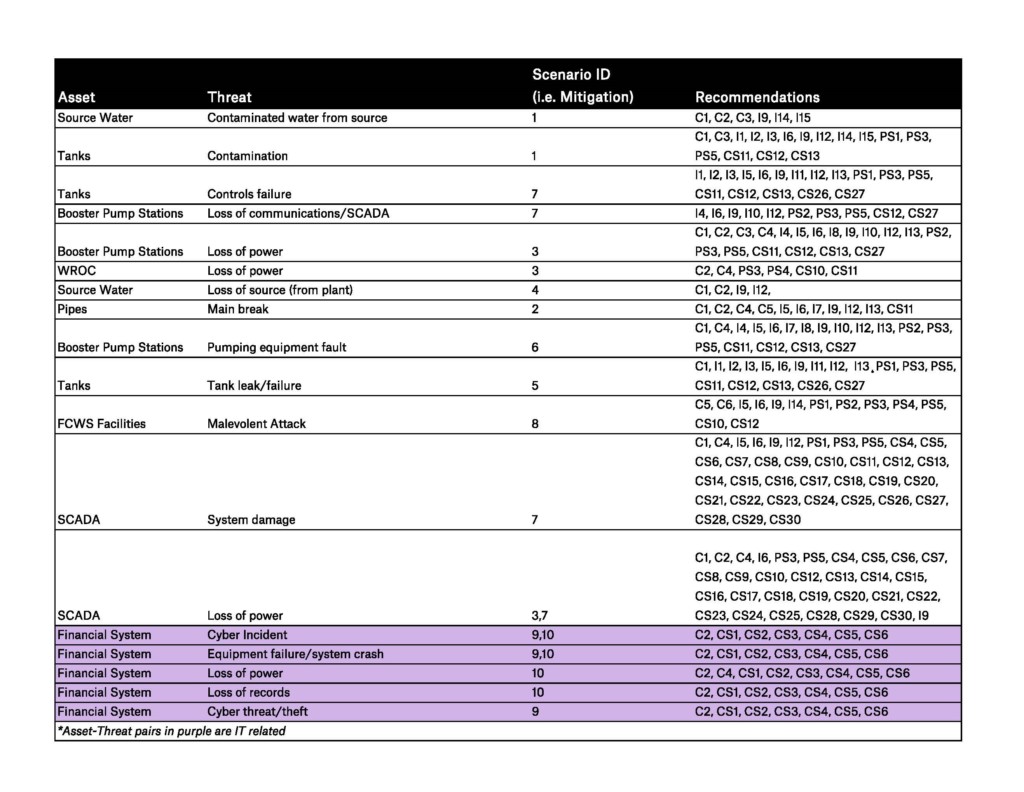America’s Water Infrastructure Act (AWIA) was passed in October 2018, amending requirements for Emergency Response Planning in drinking water utilities. The Act means that all community water systems that served between 3,301 and 49,999 customers as of October 2018 are facing two critical deadlines in the near future: by June 30th of this year, they must submit their Risk & Resilience Assessment (RRA) certification; and by December 30, 2021, they must submit their Emergency Response Plan (ERP) certification.
For these smaller utilities in particular, the new AWIA requirements can seem overwhelming. Our team at Gresham Smith has helped a range of small, mid-sized, and large water utilities develop ERPs, customizing our approach in each case based on the utility’s size and needs, and we’ve picked up some best practices along the way. Here are three of our “Special Weapons and Tactics”—our SWAT team approach—that systems serving <50,000 customers can apply to meet this year’s RRA/ERP deadlines.

SWAT Tactic #1 – Don’t use all the tools.
Tools are meant to make a job easier or to produce better results, but one size does not fit all. The American Water Works Association (AWWA) and US Environmental Protection Agency (EPA) have created a number of tools to assist water utilities in RRA/ERP compliance. However, these tools are optional and may not be ideally suited for every utility.
For example, the EPA offers a free “Vulnerability Self-Assessment Tool” (VSAT Web 2.0), an online software that can generate an RRA in compliance with AWIA. This tool can help verify that utilities are taking a thorough look at all the assets prescribed in AWIA. VSAT also employs a number of calculators, such as the “WHEAT” calculator, which assesses consequences, the value of fatalities or injuries, utility economic costs and regional economic damage.
While these quantitative elements may help a utility plan for or prioritize risks, they are not required. If a utility is focused on doing an expert job in their RRA/ERP with no extra artillery, they should be selective about which tools they employ.
SWAT Tactic #2 – Do what you do best.
AWIA very clearly outlines the content of an RRA/ERP. Some of this content is best developed by the utility directly, such as organization charts and communication strategies, and utilities can keep their consulting costs down by leveraging their in-house staff to complete many AWIA planning criteria and employing consultants, like Gresham Smith, to complete only the elements that warrant specialized expertise.
For example, our RRA/ERP clients have used our team for water modeling – identifying main break or failure scenarios, mapping customer impacts, and developing strategic response steps, such as an isolation plan or back-up supply. We’ve also helped our clients with the cybersecurity emphasis that AWIA rolled out, even navigating the specifications for a server replacement. Smaller utilities, or those operating on a more limited budget, can achieve a better and less expensive RRA/ERP by rolling up their sleeves and doing what they do best – and leveraging their consultant alongside for the rest.

SWAT Tactic #3 – Be ready to do it again.
AWIA requires that water utilities submit updated RRA/ERP certifications every 5 years. This means that the work done this year will be recycled, so the RRA and ERP should be in a user-friendly format that is easy to edit.
At Gresham Smith, we have used an Excel-based tool to capture all the essential information in the ERP. Embedded hyperlinks enable users to quickly locate a response strategy, if a particular asset-threat pair “event” occurs. We provide this tool to our clients so they can easily and quickly make edits when personnel or protocols change. Bulky paperweights (large, hard copy documents) are not required by AWIA, and they are certainly not the most flexible format for utilities facing routine updates. Our Excel tool is one example of many in “dreaming small” – but the theme is consistent: keep it simple, and it’s more likely to be adopted and updated regularly.
More Than Compliance
Applying these three S.W.A.T. tactics can make the AWIA requirements more manageable for smaller utilities or those with a limited budget. And as you embark in your RRA/ERP initiative, bear in mind that compliance is not the primary benefit of the exercise. The clients we’ve guided have recognized a number of meaningful impacts on their operations. For some, we have identified water augmentation strategies with neighboring utilities, which enable them to mitigate the effects of a break/outage more quickly and limit customer impact. For others, we’ve developed standard operating procedures and guidance to support staff in responding to a threat – for example, how to recognize a phishing attack, or what to do after report of a chemical spill.
For all of our RRA/ERP clients, we provide recommendations associated with resilience, detection, and mitigation strategies. Often these are very simple and low-cost to implement, such as signage or procedural changes. In other cases, they can be prioritized and incorporated into a capital improvements budget for continual progress as their ERP is updated, working towards a higher level of risk resilience across all assets in their water utility.